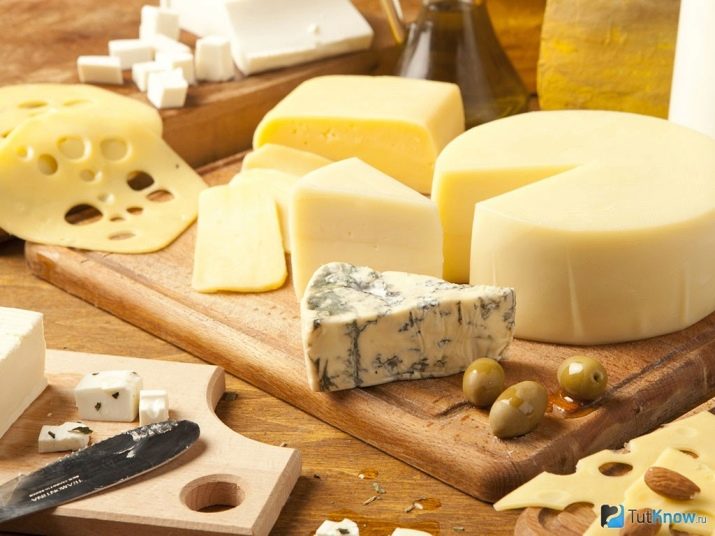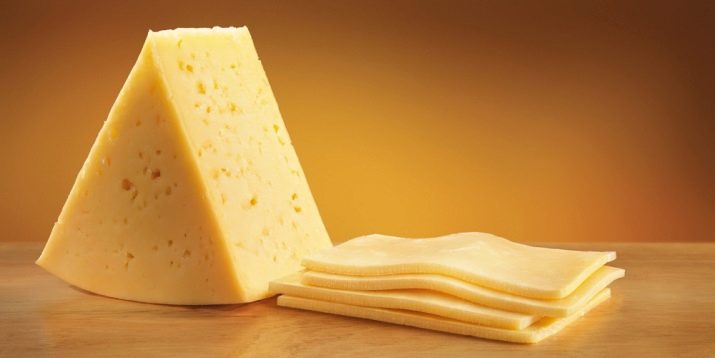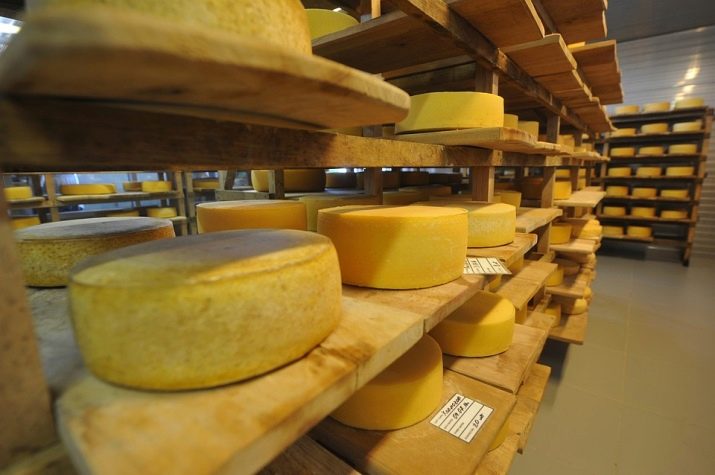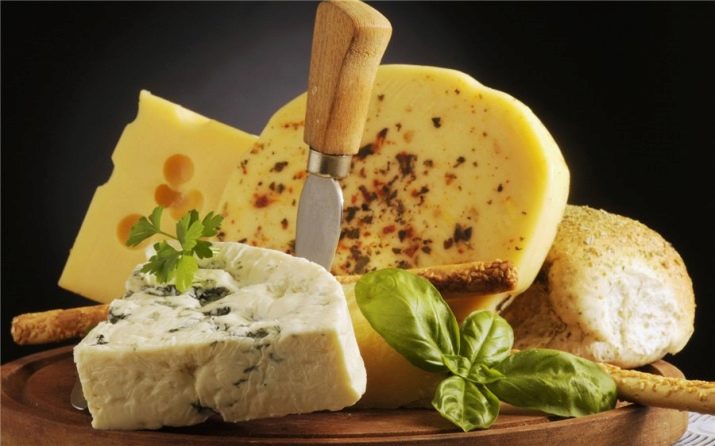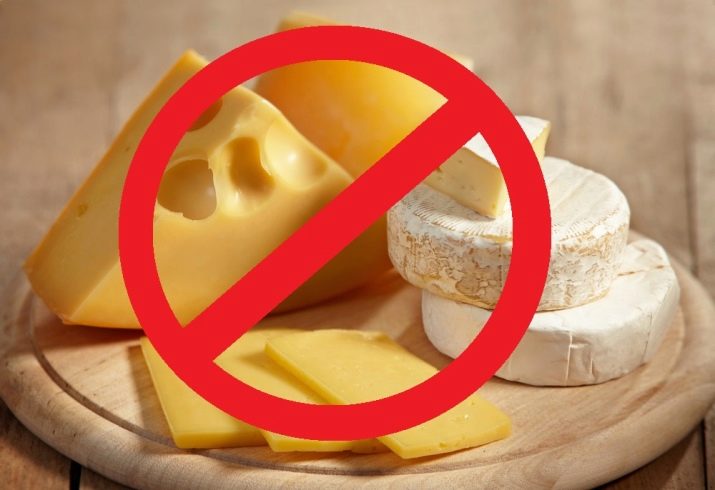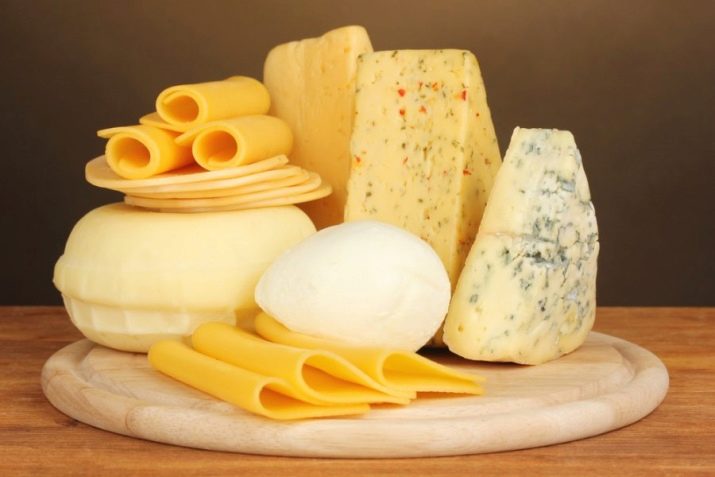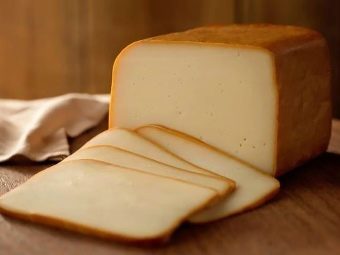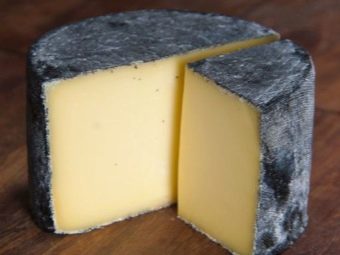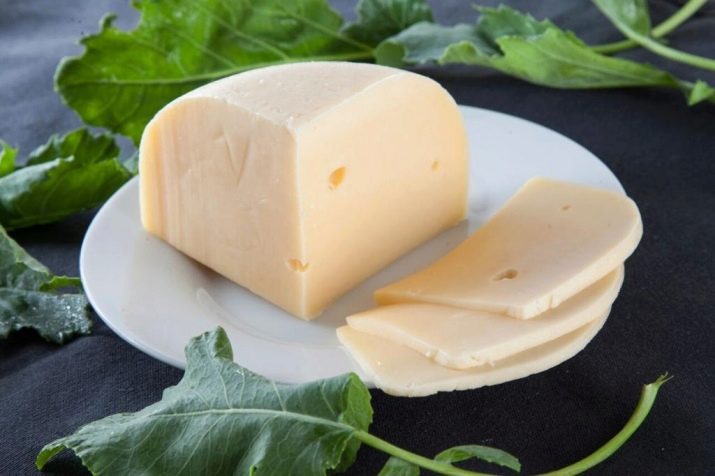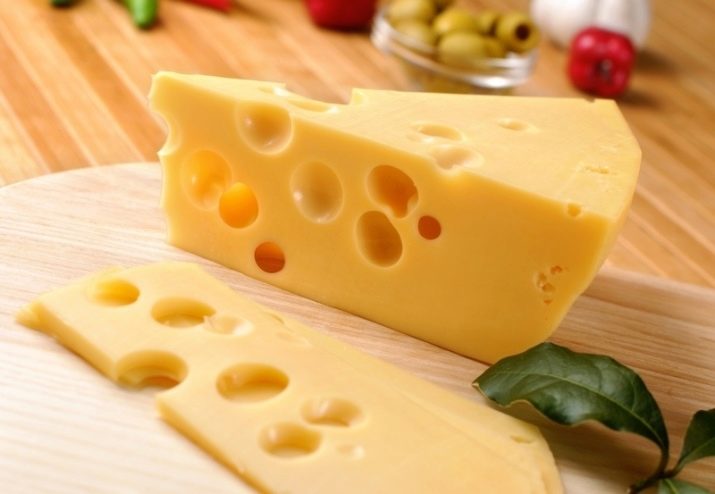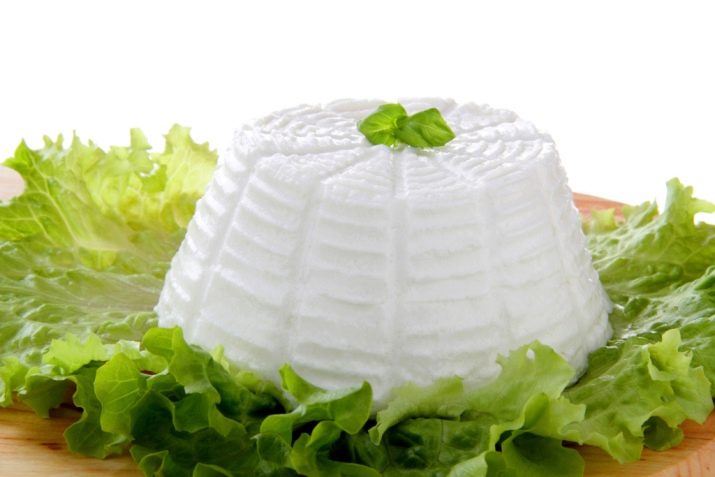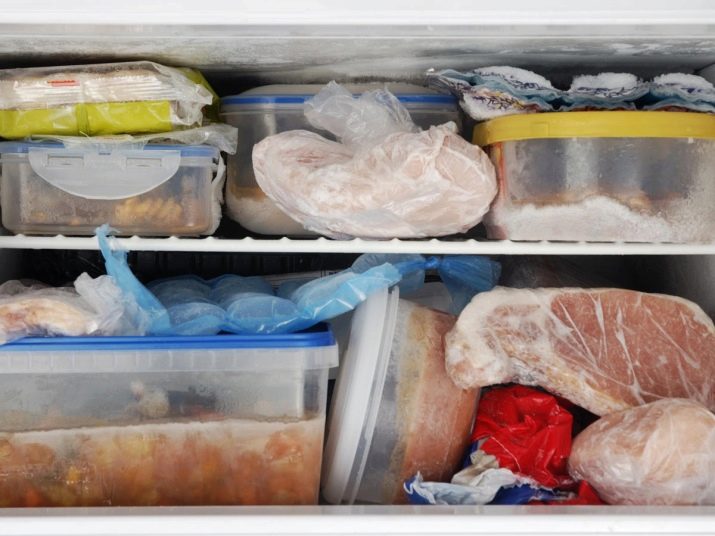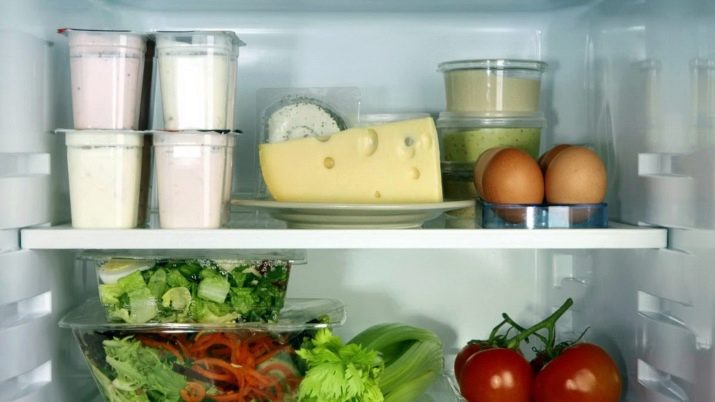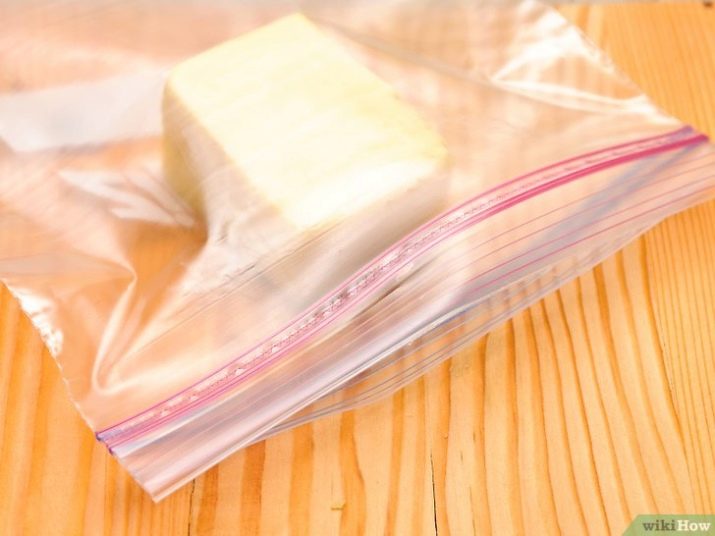Hard cheese: calories and varieties, benefit and harm
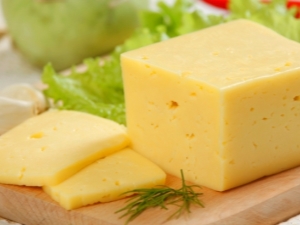
Hard cheese is one of the most popular and favorite products not only in our country, but throughout the world. As is often the case today, a product that everyone has heard is actually not familiar to anyone, because few can explain in detail what it is and how to use it properly. Since hard cheese is a regular guest on the table of our typical compatriot, we still need to be more actively interested in this. So let's try to deal with all aspects of this dairy product.
general characteristics
Even scientists cannot say for sure when and where cheese making first appeared, but it is known that the oldest evidence of the existence of cheese is seven and a half thousand years old. Most likely, a curious product was discovered because for ancient people it was the norm to store various foods in the stomachs of slaughtered animals. The enzymes contained there, which are able to survive for some time after the death of the animal, caused active fermentation of the milk stored in such a kind of vessel, resulting in an unknown edible and rather tasty substance.
The product obtained in the manner described was, at best, cottage cheese, but the person quickly realized that it was an interesting discovery and began experimenting with recipes and cooking methods. It even went so far that at first they stopped making cheese directly in the stomach of a dead animal, began to use only the enzyme extracted from there, and over time even replaced it - today ferments are completely different and may not contain any animal products at all. Over time, the soft product was guessed to extrude for a denser consistency - this is how hard cheese turned out.
Any particular GOST does not describe all hard cheeses as a whole. - for example, GOST 11041-88 describes the technical conditions of Russian cheese, but does not apply to varieties having a foreign origin of the formulation, even if they are produced in Russia. In the world one can count more than a dozen cheeses - these include, for example, the famous Parmesan and Gouda, Maasdam and Dutch, Swiss and many others.
They actually have quite a few common features - for example, high density with relatively low moisture content. Outside, the head of the cheese is covered with a special crust, and the ripening period of the product is quite long - from three months to several years, but then the shelf life is appropriate. Due to the fact that the production of one cheese head requires a lot of milk, this cheese is much more expensive than softer varieties.
Composition, nutritional value and calories
To consider the nutritional value of hard cheese as a whole is not very correct, since it is not one product, but several dozen varieties that are not always so similar to each other. For this reason, all the figures given here will be given with a certain variation, and it is possible that a particular variety will go beyond the specified limits.
In general, the average BFA cheese for durum varieties is as follows: proteins - 26%, fats - 26.5%, carbohydrates - 3.5%. At the same time, these figures are only very approximate, since the fat content of the product differs greatly depending on the variety - this characteristic is typical of dairy products.
Known varieties whose fat content is an impressive 50 grams of fat per 100 grams of product, and this certainly affects the caloric content, which even on average is quite high - about 355 kcal. However, such a high energy value should not be surprising, because hard cheese does not contain any water or dietary fiber.
Separately, it should be noted that proteins are absorbed from it much faster and better than from fresh milk, and high fat content, which represents a certain danger to the figure, is usually considered an indicator of usefulness.
As for the vitamin complex, it is quite rich in hard cheese, but this product is especially valuable for a person due to the high content of vitamin A (40-50% of the daily value in 100 grams), B12 (the same 40-50%) and PP (20-25%).
The content of various useful chemical elements is also very large - for example, only 100 grams of hard cheese fully meet the daily calcium requirement of the human body. Other microelements, of course, are somewhat behind such impressive indicators, but everything is pretty good with them: the same 100 grams provide 65-70% of sodium and phosphorus, as well as 30-35% of zinc and 12-14% of magnesium.
Beneficial features
The benefit of milk for children and adults does not cause any doubt, and in fact cheese is the same milk, and even in a concentrated form. Useful properties, in contrast to the same BJU, are not particularly dependent on a particular sort of cheese, and although individual varieties may have additional ingredients, and therefore a slightly different effect on the organism, in general, generalizations here are very relevant.
So, any hard cheese is good for the human body for the following reasons:
- The proteins present in the product help to maintain muscle tissue in order, especially since they are absorbed from cheese much better than from milk;
- Vitamins A and E make a person attractive, as they provide natural skin and hair care, and even contribute to the improvement of vision;
- You can not talk about the benefits of vitamin C once again - everybody knows from childhood how important it is for maintaining immunity;
- phosphorus and calcium are vital for the formation of new bone tissue, and this is noticeable not only in potentially traumatic situations, but also in everyday life - in the teeth;
- hard cheese is one of the best means to increase the level of hemoglobin in the blood, and therefore this product is shown for regular use to patients with diagnosed anemia;
- the composition of products contributes to the alignment of blood pressure, in which there are no more sharp jumps;
- hard cheese components help normalize body metabolism;
- hard cheese is recommended for children, because its balanced, rich in vitamins and minerals composition strengthens the children's body and helps it grow healthy;
- a significant content of vitamins of group B allows you to maintain the nervous system in the normal state, and even fight off bouts of insomnia and depression - the product is considered a popular prophylactic in these cases;
- typical hard cheese usually has a high energy value, however, those varieties where calories are less are quite appropriate in the diet even for those who want to lose weight quickly - at least due to the same normalization of metabolism;
- fatty acids present in hard cheeses have a scientifically proven ability to prevent the formation of cancerous tumors;
Contraindications
For people who are actively interested in healthy nutrition, it is certainly obvious that even a comprehensively useful product can be harmful if it is commonplace to overeat. And although hard cheese seems to most of us to be a product that even theoretically is not capable of provoking any problems, there are certain groups of people to whom such food is contraindicated or not recommended, since even it can provoke not the best effect on the body.
First of all, hard cheese should not be used by people suffering from lactose intolerance, but they certainly know about it. We will consider other side effects of a popular product.
- Amino acid tryptophan, which helps the human body to actively get rid of various toxins, in large quantities can become the cause of nightmares and headaches.Most people do not notice this effect, but if the symptoms described are already quite developed, you should not abuse the cheese.
- With a positive effect on most systems of the human body, a significant fat content in hard cheese cannot but affect the level of cholesterol in the blood. An over-fat, high-calorie diet (such as it can become due to actively consumed cheese) can be a factor in the development of atherosclerosis or hypertension.
- High calorie can quickly trigger weight gain, and if a person has this problem without it, the effect will be even brighter. However, even overweight is not a hindrance, if you choose low-calorie varieties of hard cheeses.
- The effect of the product on people with chronic diseases of the gastrointestinal tract to predict in advance is difficult, because they are recommended to use cheese in small quantities, so as not to overload the stomach and intestines.
- Hard blue cheese is considered a rather refined delicacy, however, doctors usually do not advise pregnant women to use such products.
Kinds
The names of varieties of hard cheese are quite numerous, and an unknowing person would have to try each time at random, if the whole range was not divided into certain categories, which generally describe all the incoming varieties and indicate the other most related varieties. The classification can also be different, but usually they are repelled from such species:
- natural aging cheeses are produced according to the most classic recipe, without using any methods that accelerate the ripening of milk, because the latter is usually not even heated in the process;
- mold varieties suggest the use of specially synthesized bacterial cultures as a starter, whose colonies in the form of inclusions are clearly visible in the structure of the final product and give it a special flavor;
- smoked cheese usually does not belong to the hard varieties, but in some exceptional cases it is podkapchivayut for a special flavor and longer storage;
- the so-called peasant cheeses usually differ in the method of production, because they are not made at the factory, but in private farms - this makes a good, unique, 100% natural product with a bright, sour-milk taste, which often turns out to be relatively exotic - natural rennet or sheep instead of cow's;
- cheeses with a crust are usually stored for a little longer, and the crust itself, if it is not made at the plant from modern inedible materials, can be not only edible, but also quite piquant, since in expensive varieties its processing may include watering with wine, sprinkling with pepper and many other similar procedures.
Popular brands
Cheese is food, and it is quite tasty, and one should not talk about food - it should be eaten. At the same time, many people, actively consuming cheese, are limited to a couple of three sorts, and have not tasted those species that are considered recognized throughout the world. You can love any variety - even one that doesn’t like anyone but you but the real “syroman” literally has to try several varieties that are considered classics.
- Parmesan. This variety is probably the most recognizable cheese in the world, among Italian ones, for sure. Real Parmesan is traditionally considered to be salad cheese, as it is rather hard when mature. True, the Italians themselves eat this variety in the form of cheese plates served for wine, but such cutting is made only from young cheese, which reaches us relatively rarely. Calorie cheese - 390-420 kcal per 100 g
This product, by analogy with the same port, is tried to be forged in Russia, however, real Parmesan is made only in Italy, and even then not universally.
- Gouda This Dutch variety in terms of fame is worthy of competition with Parmesan, but it is much softer.The product has a fat content of up to 50%, so it should be used with great care. Cumin and mustard, pepper and herbs are used as flavor additives, and the older the head of the cheese, the sharper the taste, which was originally mild. Such cheese is often salty, and as for color, it is closer to white rather than yellow. Calorie - 356 kcal.
- Maasdam. Although this name is not so familiar, experts call this product the most purchased all over the world. Actually, the typical cheese in any pictures is often exactly Maasdam, because it has a “typically cheese” look - it is yellow and with large holes. Calories - 350 kcal.
- Cheddar. This English product complements the list of world famous cheeses. Like Parmesan, it has a rather dense structure, in which there is no place for holes, because it is often rubbed on a grater or used as part of various dishes. Calorie - about 400 kcal.
Not to mention the cheese, which is called Russian, even if its production is not located in Russia. Such product belongs to rennet and is produced in many countries of the former Soviet Union. If you usually bought it as a hard cheese, when trying other varieties, be prepared for the fact that Russia, according to the official description, was only semi-solid.
This sour yellow cheese with small eyes is fatty - the fat content can reach almost 52%. Calories - 362 kcal. If the features of their own health are actively pushing to choose low-fat cheese, you should pay attention to low-fat varieties. It should be understood that cheese as a product is largely formed due to fats, because the so-called low-fat product actually only has no more than 20% fat.
Actually hard cheeses of this type are usually not too untwisted, but it is worth paying attention to such varieties as Gaudette (the same Gouda, with only 7% fat) and Italian Ricotta with up to 13% fat. Calorie Gaudetta - 199 kcal, and Ricotta - 174.
Is it possible to freeze?
For most products, the most reliable way to extend their shelf life is to freeze it in the freezer. This method is well suited even for the storage of very short-lived vegetables and fruits, but this is not the case with cheese, and for good reason. The fact is that subzero temperature adversely affects the structure of the cheese, due to which it loses its characteristic hardness, and it is very likely that it will crumble when trying to cut it.
Theoretically, even such a “spoiled” product can be reused as part of hot dishes with cheese, but good product varieties are stored for a very long time without freezing, and for home use a lot of hard cheese is usually not bought.
Term and rules of storage
As for the storage of hard cheese, it all depends on the specific variety, since for solid varieties the normal shelf life can be one month or one year. However, it is not worthwhile to especially inspire with such numbers, because they assume optimal conditions - precisely calculated temperature and humidity, whereas at home, if you yourself are not engaged in cheese making, it is difficult to ensure this.
Ordinary citizens put bought hard cheese in the fridge, but it should not be kept there too long - experts usually agree that a week and a half for such a product will be the limit, otherwise it will simply dry up. If it is possible to choose a shelf depending on the exact temperature, give preference to indicators at the level of 6-8 degrees above zero.
In the freezer, as mentioned above, hard cheese will lose its consistency, and therefore will become unsuitable for sandwiches or serving in the form of a cheese plate.
Separately, it should be said about which package to store solid cheese in the refrigerator.The fact is that such a product very actively absorbs the surrounding smells, and if you are not an avid experimenter in the culinary field, keep it unpacked. The optimal, odor-free packaging is a regular plastic bag, but if you don’t have one, you can use enameled ware instead.
Do not use unprotected metal ware for storage, otherwise the appearance of metallic taste cannot be avoided! The traditional wrapping of hard cheese in paper or cloth is also considered undesirable, since such packaging not only does not protect against odors, but can also “give” its flavor to the product.
For the benefits and harms of hard cheese, see the following video.

